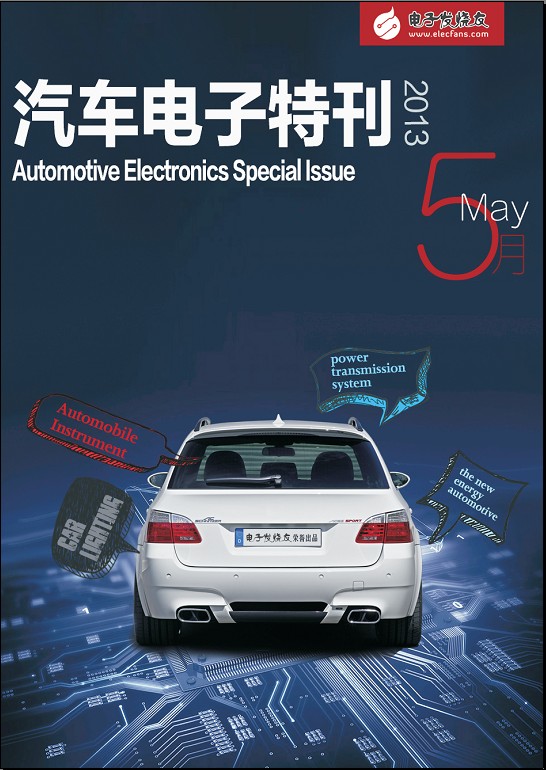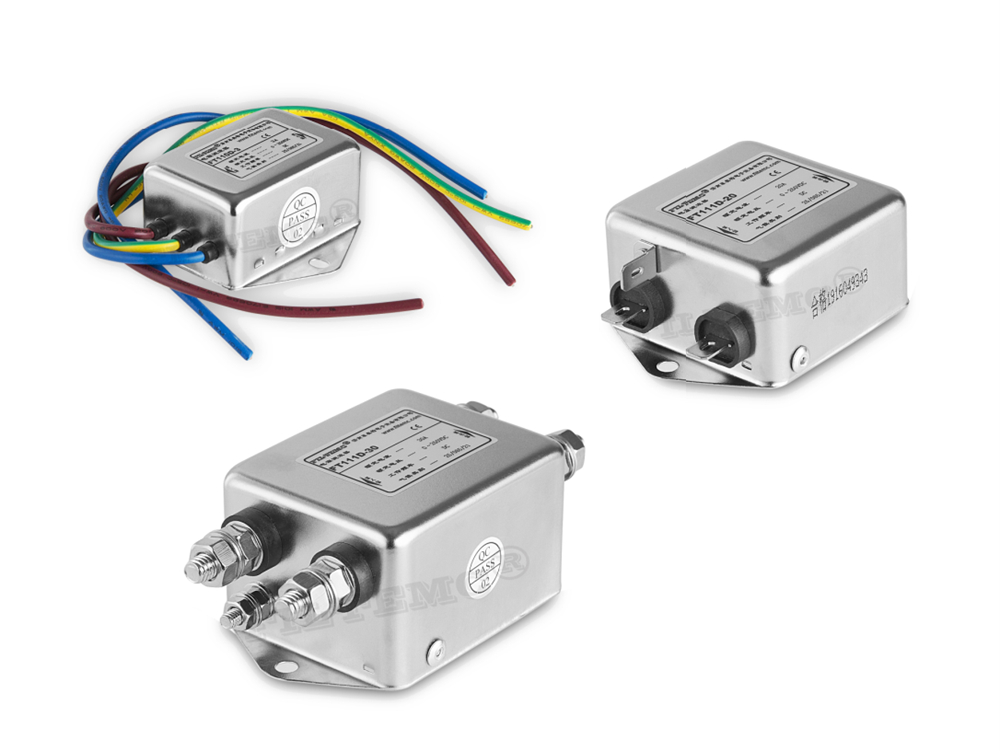Electronic enthusiasts : According to the research results of ABI Research, as consumer demand for in-vehicle connections continues to grow, in-vehicle electronic products have nearly doubled in the past decade. At the time of rapid development of automotive electronics, in-vehicle networks (IVN) have also become the focus of attention. For the vehicle network, CAN, LIN, LVDS, FLexaRay or MOST technology are preferred. When there is a lot of disagreement, Broadcom has another way to choose Ethernet technology.
"Ethernet is not new to automotive electronics, but until recently, its use has been limited to on-board diagnostic systems (OBD), not passenger-oriented applications," said TImothy Lau, deputy director of Broadcom's on-vehicle network products. To achieve the transition from OBD applications to in-vehicle networks, current Ethernet solutions must meet strict industry requirements, such as electromagnetic compatibility (EMC), heat resistance, and time to failure (FIT) rates. At the same time, suppliers must ensure that they provide An open vehicle architecture with system compatibility. "To this end, TImothy Lau emphasized that Broadcom's BroadR-Reach Ethernet technology can break the traditional shackles and meet the various needs of future automobiles.

TIMothy Lau, Deputy Director of Tubotong Automotive Network Products
How can BroadR-Reach technology help break the shackles?
Due to the high complexity of the various application scenarios of automotive electronics, the large amount of information, and the increasing demand for high bandwidth and high scalability, this is the basic reason for Broadcom to move to automotive Ethernet. In addition, from the perspective of industry standards, in-vehicle networks must meet strict regulatory requirements, and at the same time have good reliability, temperature and low power consumption requirements.
TImothy Lau revealed that the IVN application market has huge growth potential. Many original car manufacturers are considering the use of key IVN applications such as advanced driver assistance camera systems and infotainment in next-generation designs to achieve product differentiation. Car Ethernet based on BroadR-Reach technology is an emerging market that is expected to expand rapidly, and manufacturers should take advantage of this trend.
According to Timothy Lau, "Broadcom ’s BroadR-Reach Ethernet technology provides high-performance and cost-effective Ethernet on unshielded single-pair twisted-pair cables. The transmission rate can reach 100 Mbps, which can support newly added vehicle services. At the same time, the connection cost is reduced by up to 80%, and the wiring weight is reduced by up to 30%. Ethernet can enable multiple networks to be integrated into a single scalable architecture to become a "future-proof" car, greatly reducing maintenance costs. "Broadcom ’s solution Can fully meet the strict requirements of the automotive industry, including EMC, ISO-9001 and TS16949 standards.
In addition, with the increasing complexity of automotive electronic equipment, the increasing number of network nodes, and the increasing bandwidth requirements, IVN is achieving higher performance, higher bandwidth, higher efficiency, and higher levels of scalability. The Ethernet architecture is highly flexible and can be configured into a variety of topologies, including star, ring, and a mixture of the two. Secondly, Ethernet can also support port-specific bandwidth, so that each topology can maintain the integrity of the overall network performance. In addition, the use of link aggregation can increase the dedicated bandwidth of the endpoint and provide a failover mechanism for safety-critical applications. There is no doubt that BroadR-Reach Ethernet technology can effectively deal with future equipment upgrades and bandwidth expansion issues.
In fact, with the advent of the era of intelligent interconnection, the future performance of automotive networking will become an important selection criterion for consumers to purchase cars. Timothy Lau said that in response to this development trend, Broadcom ’s comprehensive wired and wireless in-vehicle devices provide a scalable connection backbone architecture to drive higher bandwidth, intelligent applications, infotainment systems, and advanced driving safety features. Advances in Ethernet connection technology, reducing the cost of implementing solutions, are allowing applications such as infotainment systems and advanced driver assistance systems to be adopted by a wider range of people. By significantly reducing the connection cost and wiring weight of a single network, mature IP-based Ethernet technology can enable automakers to find a balance between performance and cost.
Broadcom creates an open industry chain to meet the bandwidth requirements of the next generation of IVNS
According to the latest Internet Connected Vehicle Market Forecast Report, the global Internet of Vehicles market size is expected to reach US $ 21.82 billion in 2013. Internet of Vehicles has become a huge gold mine in the field of Internet of Things, and the IVN market potential is expected.
Timothy Lau revealed: "BroadR-Reach Ethernet technology can meet the high bandwidth requirements of IVN, and its transmission rate can reach 100 Mbps. In the next five to eight years, it is expected to achieve higher transmission rates." In addition, for 802.3 The newly established IEEE research group of reduced-twisted pair (reduced twisted pair) Gigabit Ethernet technology also proposed a roadmap for automotive Ethernet with a higher data transmission rate in the Ethernet standards organization.
Broadcom will continue to actively participate in the relevant activities of the Open Alliance SIG and IEEE, and actively interact with original equipment suppliers and first-line partners to promote the development of BroadR-Reach Ethernet-based IVN. As the industry accelerates the adoption of Ethernet-based networks to provide high-performance bandwidth on the industry ’s lowest-cost cabling solutions, interest in Broadcom ’s BroadR-Reach® technology has grown dramatically. Last month was the anniversary of the Open (Single Pair Ethernet) Alliance Special Interest Group, which was jointly established by Broadcom and leading technology companies and car manufacturers to promote Ethernet-based networks into automotive applications Standard. Since the establishment of the Open Alliance a year ago, the total number of members has soared to more than 125, many of which are the world's leading technology companies and car manufacturers.
Timothy Lau believes that cars will be the next frontier platform for smart connectivity, and is working with leading car manufacturers and tier one suppliers to continue to promote the innovation of in-vehicle connection technology. The open alliance created by Broadcom is currently promoting the 1Gbps BroadR-Reach solution. This new solution will easily meet the bandwidth requirements of the next-generation IVNS.
In order to promote the development and popularization of in-vehicle Ethernet standards, Broadcom and NXP, Freescale, and Harman International established the "OPEN (One-Pair Ether-Net) Alliance" in November 2011 and cooperated with original equipment suppliers. Actively interact with first-line partners to promote the development of IVN based on BroadR-Reach Ethernet. As the industry accelerates the adoption of Ethernet-based networks, Broadcom can provide high-performance bandwidth on the industry's lowest-cost cabling solutions, and many companies' interest in BroadR-Reach® technology has also grown dramatically. The first car to use Broadcom BroadR-Reach® Ethernet technology will be the 2013 BMW X5, which is equipped with the world ’s first 360-degree surround-view parking assist system. Developed jointly by OmniVision. This first car equipped with Open Alliance compatible technology is expected to be available in 2013.
Finally, Timothy Lau said that Broadcom ’s future development strategy is to cooperate with many car manufacturers to easily and economically integrate the award-winning BroadR-Reach® series into in-vehicle systems, making it able to provide the most infotainment and navigation and safety The most advanced vehicle-mounted system with functions.
About Timothy Lau
Timothy Lau is currently the Deputy Product Director of the Automotive Network Products Division of Broadcom ’s Infrastructure and Networking Group. In this position, Mr. Liu is responsible for the specification, development and marketing of Broadcom ’s in-vehicle network products. Mr. Liu has more than 20 years of experience in the technology industry, and successfully managed a series of products, including gateway network platform products, mobile graphics products, PC and memory technology products. Prior to joining Broadcom, Mr. Liu had held product management positions at other companies, including NVIDIA, HP and Samsung Semiconductor. Mr. Liu holds a bachelor's degree in business administration from San Francisco State University.
This article is adapted from the May issue of "Automotive Special Issue" 
——All rights reserved by Electronic Fans. Please indicate the source when reprinting!
High performance DC 2 stage filters with exceptional common and differential mode filtering effect for interference from 10KHz to 30MHz.
FT1200D series are DC 2 stage pwoer line filters comprising one common mode and one differential mode with enhanced filtering effect of the differential mode interference.FT121D series are 2 stage RFI power line common mode filters.
High voltage versions above 250VDC are also available upon request.
Applications of DC power line filters: switch power supply, SPC exchange and other DC electric devices.

DC Power Line Filter,DC 2 Stage Filter,Radio Noise Filters,RFI Power Line Filter
Jinan Filtemc Electronic Equipment Co., Ltd. , https://www.chinaemifilter.com